Home> Company News> How A Pressure Compensated Pump Works
- AddressTianqiao, Beiyuan District, Jinan,Shandong
- Factory Addresstian qiao,jinan, shandong,China(Mainland)
- Worktime9:00-18:00(Beijing time)
- Phone(Working Time)86 0531-8299 9952
- Fax86 0531 -82990353
Hydraulic systems are a vital part of many industrial and commercial applications, from manufacturing equipment to construction machinery. To function correctly, these systems require precise control, making pump selection crucial. One popular choice for hydraulic pump selection is a pressure compensated pump, which maintains a constant flow rate regardless of load changes. In this article, we will explain how a pressure compensated pump works and its advantages in hydraulic systems.
A pressure compensated pump is a type of hydraulic pump that adjusts its displacement to maintain a constant flow rate. It compensates for changes in pressure that would otherwise cause variations in flow rate. The pump uses a control mechanism that senses the load pressure and adjusts the pump's swash plate angle. The swash plate angle controls the pump's displacement, allowing the pump to maintain a constant flow rate despite load variations. The pump's control mechanism constantly monitors the load pressure and adjusts the swash plate angle to maintain the desired flow rate.
The main advantage of a pressure compensated pump is its ability to maintain a constant flow rate. This is especially important in hydraulic systems where precise control is necessary. The pump's ability to adjust its displacement also results in reduced energy consumption, making it more efficient. Pressure compensated pumps are used in various applications, including manufacturing equipment, material handling, and construction machinery. They are also used in mobile equipment like excavators and bulldozers, where maintaining a constant flow rate is essential for precise control.
There are two common types of pressure compensated pumps: axial and radial piston pumps. Axial piston pumps are designed for high-pressure applications, while radial piston pumps are typically used for lower-pressure applications. Understanding how these pumps work and their advantages can help in selecting the right pump for a particular application.
In conclusion, pressure compensated pumps are an essential component in many hydraulic systems, allowing for precise control and increased efficiency. Their ability to maintain a constant flow rate regardless of load changes makes them a popular choice in many industries. By understanding how these pumps work and their advantages, it is easier to select the right pump for a particular application.
What is a pressure compensated pump?
A pressure compensated pump is a type of hydraulic pump that is designed to maintain a constant flow rate even in the presence of changing load pressures. This is accomplished by using a control mechanism that senses changes in the load pressure and adjusts the pump's displacement accordingly.
A pressure compensated pump is essentially a positive displacement pump that is equipped with a mechanism to regulate the flow rate. The pump's displacement can be adjusted by altering the angle of the pump's swash plate, which controls the volume of fluid being moved per revolution of the pump. When the load pressure increases, the swash plate angle is reduced, decreasing the pump's displacement and maintaining a constant flow rate. Similarly, when the load pressure decreases, the swash plate angle is increased, increasing the pump's displacement to maintain a constant flow rate.
Pressure compensated pumps are commonly used in hydraulic systems that require precise control, as they can maintain a consistent flow rate even in the presence of changing loads. This is particularly important in applications where the hydraulic system is required to perform a specific task, such as in manufacturing equipment or construction machinery. By maintaining a constant flow rate, pressure compensated pumps provide the necessary control to ensure that the system operates efficiently and effectively.
Overall, pressure compensated pumps are an essential component of many hydraulic systems, and their ability to maintain a constant flow rate regardless of load changes makes them an attractive option for a wide range of applications. In the next section, we will discuss how a pressure compensated pump works in more detail.
How does a pressure compensated pump work?
A pressure compensated pump is a type of hydraulic pump that maintains a constant flow rate regardless of changes in the load pressure. The pump achieves this by adjusting its displacement through a control mechanism that senses the load pressure.
When the load pressure changes, the control mechanism adjusts the swash plate angle of the pump, which in turn adjusts the pump's displacement. This ensures that the flow rate remains constant despite variations in the load pressure.
The pump's control mechanism constantly monitors the load pressure and adjusts the swash plate angle to maintain the desired flow rate. This allows the pump to deliver the required amount of fluid without overloading the system.
Pressure compensated pumps are used in various applications where precise control is necessary, such as manufacturing equipment, material handling, and construction machinery. They are also used in mobile equipment like excavators and bulldozers, where maintaining a constant flow rate is essential for precise control.
In the next section, we will discuss the advantages of pressure compensated pumps in more detail.
Advantages of a pressure compensated pump
Pressure compensated pumps offer several advantages over other types of pumps. Here are some of the main benefits:
-
Maintains a Constant Flow Rate: A pressure compensated pump is designed to maintain a constant flow rate, regardless of the load placed on the system. This is particularly important in hydraulic systems where precise control is necessary, as it ensures that the system operates at a consistent speed.
-
Reduced Energy Consumption: The pump's ability to adjust its displacement also results in reduced energy consumption, making it more efficient than other types of pumps. This can result in cost savings over time, especially in high-load applications where energy consumption is a significant concern.
-
Longer Pump Life: Because a pressure compensated pump only works as hard as it needs to, it experiences less wear and tear than other types of pumps. This means that it has a longer lifespan and requires less frequent maintenance, reducing downtime and repair costs.
-
Improved System Performance: By maintaining a constant flow rate, a pressure compensated pump can improve the performance of hydraulic systems, providing more precise control and better overall operation. This can result in improved productivity and fewer errors or malfunctions.
-
Versatility: Pressure compensated pumps are used in a variety of applications, from manufacturing equipment to construction machinery. This versatility means that they can be used in a wide range of settings and industries, making them a popular choice for many different types of hydraulic systems.
Overall, pressure compensated pumps offer many advantages over other types of hydraulic pumps, making them a popular choice for a wide range of applications. Their ability to maintain a constant flow rate and reduce energy consumption make them ideal for high-load applications where efficiency and precision are essential.
Applications of a pressure compensated pump
Pressure compensated pumps are used in a wide range of hydraulic applications, from heavy-duty industrial machinery to mobile equipment. Here are some common applications:
-
Manufacturing equipment: Pressure compensated pumps are used in manufacturing equipment such as presses, injection molding machines, and rolling mills. These machines require precise control of fluid flow, and pressure compensated pumps provide a constant flow rate, resulting in consistent production output.
-
Material handling: Material handling equipment such as forklifts, cranes, and conveyors use hydraulic systems to lift and move heavy loads. Pressure compensated pumps ensure smooth and consistent operation, allowing for safe and efficient material handling.
-
Construction machinery: Excavators, bulldozers, and other heavy construction equipment require precise hydraulic control for digging, lifting, and moving heavy materials. Pressure compensated pumps maintain a constant flow rate, providing precise control and efficient operation.
-
Agricultural machinery: Modern agricultural equipment, such as tractors and combines, use hydraulic systems for various functions, including steering, braking, and lifting. Pressure compensated pumps ensure precise control and efficient operation, which is crucial for modern farming practices.
-
Mobile equipment: Pressure compensated pumps are also used in mobile equipment such as cranes, drilling rigs, and fire trucks. These applications require precise hydraulic control for safe and efficient operation.
In summary, pressure compensated pumps are used in a wide range of hydraulic applications where precise control and consistent flow rate are necessary. By maintaining a constant flow rate, these pumps help ensure safe and efficient operation in various industries.
Common types of pressure compensated pumps
There are two main types of pressure compensated pumps: axial piston pumps and radial piston pumps. These pumps differ in design and are better suited for specific applications.
Axial Piston Pumps
Axial piston pumps are designed for high-pressure applications, making them ideal for hydraulic systems that require high pressure and high flow rates. These pumps consist of a cylinder block with several piston-cylinder arrangements arranged around an axis. As the cylinder block rotates, the pistons move in and out of their cylinders, which generates the pumping action. The swash plate angle is adjusted to change the piston stroke and hence the pump's displacement.
Axial piston pumps can be further categorized into two types:
Bent Axis Piston Pumps
In a bent axis piston pump, the cylinder block is mounted at an angle to the drive shaft. The pistons are connected to a swash plate that is mounted at an angle to the cylinder block. As the cylinder block rotates, the pistons move in and out of their cylinders, and the swash plate angle changes to adjust the pump's displacement.
Bent axis piston pumps are highly efficient and capable of generating high flow rates and high pressure. They are commonly used in mobile equipment, such as excavators and bulldozers.
Inline Piston Pumps
In an inline piston pump, the cylinder block is mounted parallel to the drive shaft. The pistons are connected to a swash plate that moves in a straight line. As the cylinder block rotates, the pistons move in and out of their cylinders, and the swash plate angle changes to adjust the pump's displacement.
Inline piston pumps are highly efficient and capable of generating high flow rates and high pressure. They are commonly used in manufacturing equipment and other stationary applications.
Radial Piston Pumps
Radial piston pumps are designed for lower-pressure applications and are typically used in hydraulic systems that require a lower flow rate. These pumps consist of a rotor with several pistons arranged radially around it. The rotor rotates eccentrically within a stationary housing, causing the pistons to move in and out of their cylinders, which generates the pumping action. The swash plate angle is adjusted to change the piston stroke and hence the pump's displacement.
Radial piston pumps are highly efficient and have a long service life. They are commonly used in material handling and other applications that require a low flow rate.
Conclusion
Pressure compensated pumps are essential in many hydraulic systems, providing constant flow rates and increased efficiency. In this article, we explored how pressure compensated pumps work, their advantages, and common types. By understanding the principles behind these pumps, hydraulic system designers and engineers can make informed decisions when selecting the appropriate pump for their application.
Hydraulic systems require precise control to function correctly, making pump selection crucial. Pressure compensated pumps are a popular choice because of their ability to maintain constant flow regardless of load changes. The pumps compensate for changes in pressure that would otherwise cause variations in flow rate.
A pressure compensated pump uses a control mechanism that senses the load pressure and adjusts the pump's swash plate angle. The swash plate angle controls the pump's displacement, allowing the pump to maintain a constant flow rate despite load variations. The pump's control mechanism constantly monitors the load pressure and adjusts the swash plate angle to maintain the desired flow rate.
The main advantage of a pressure compensated pump is its ability to maintain a constant flow rate, which is especially important in hydraulic systems where precise control is necessary. The pump's ability to adjust its displacement also results in reduced energy consumption, making it more efficient.
Pressure compensated pumps are used in various applications, including manufacturing equipment, material handling, and construction machinery. They are also used in mobile equipment like excavators and bulldozers, where maintaining a constant flow rate is essential for precise control.
There are two common types of pressure compensated pumps: axial and radial piston pumps. Axial piston pumps are designed for high-pressure applications, while radial piston pumps are typically used for lower-pressure applications.
In conclusion, pressure compensated pumps are an essential component in many hydraulic systems, allowing for precise control and increased efficiency. Understanding how these pumps work and their advantages can help in selecting the right pump for a particular application. With the right pump, hydraulic systems can operate smoothly and efficiently, delivering reliable performance in a wide range of applications.


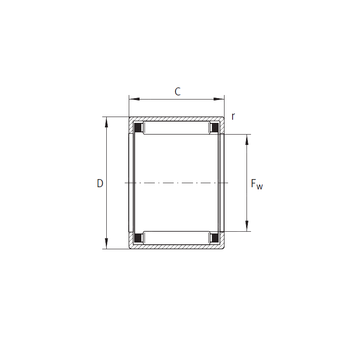 SCE5612 INA Needle Roller Bearings
SCE5612 INA Needle Roller Bearings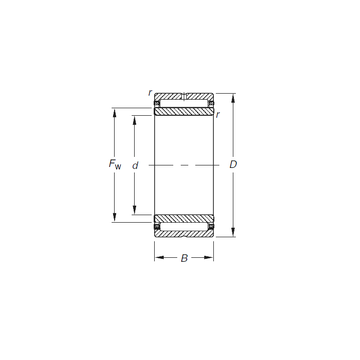 NKJ20/16 Timken Needle Roller Bearings
NKJ20/16 Timken Needle Roller Bearings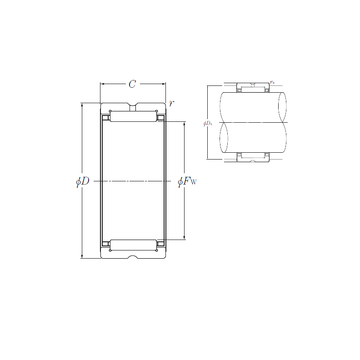 RNA4976 NTN Needle Roller Bearings
RNA4976 NTN Needle Roller Bearings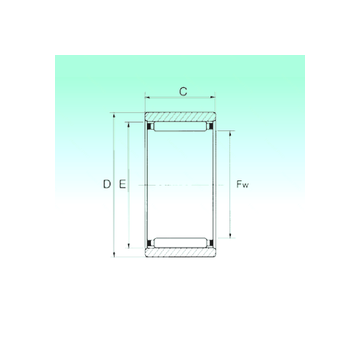 RNAO 35x47x16 NBS Needle Roller Bearings
RNAO 35x47x16 NBS Needle Roller Bearings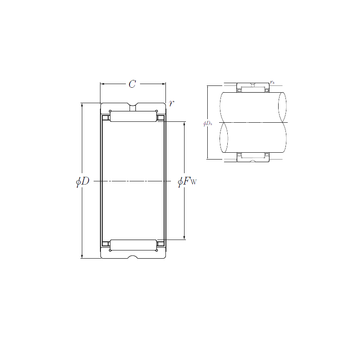 NK42/20R NTN Needle Roller Bearings
NK42/20R NTN Needle Roller Bearings